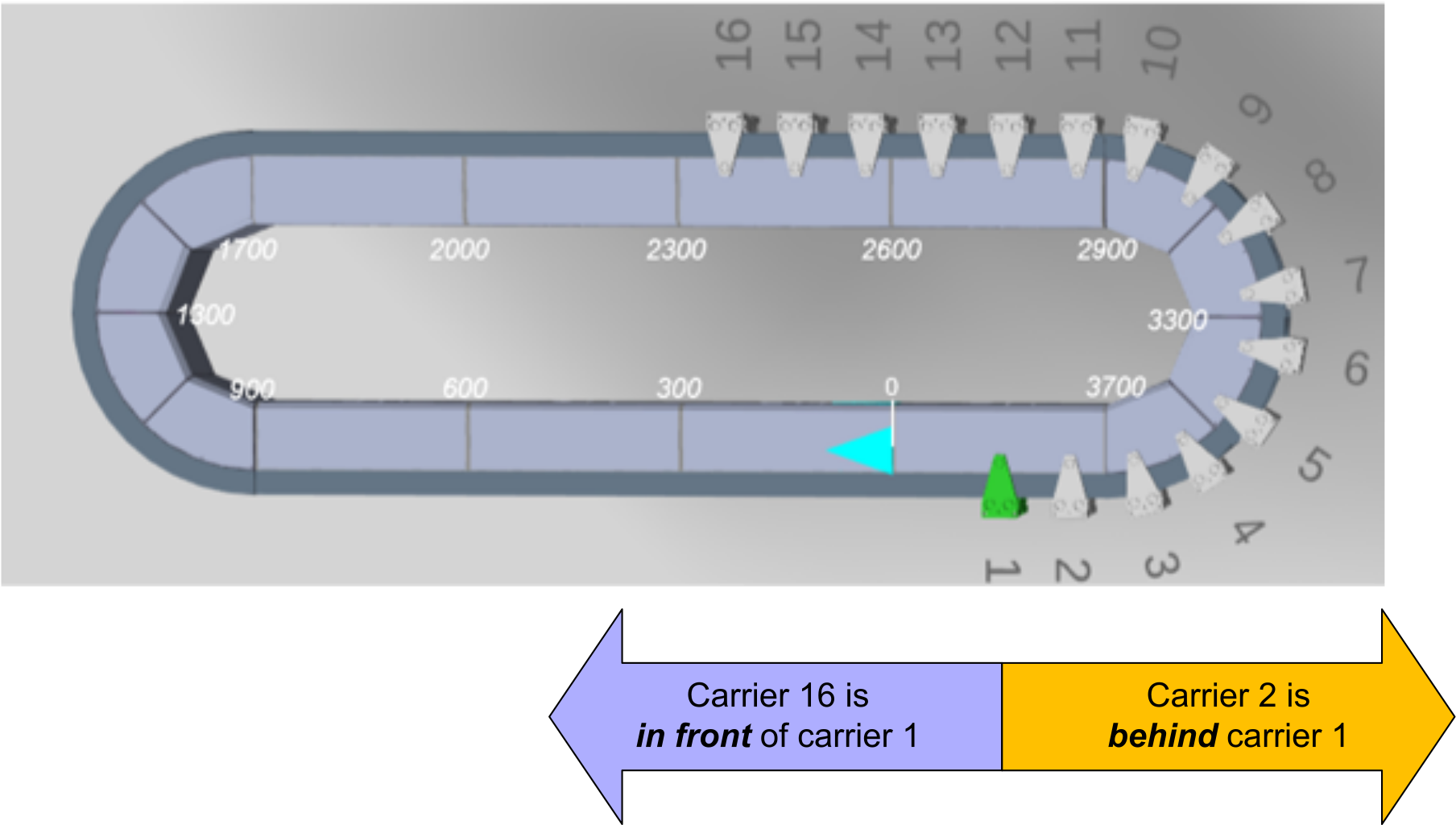Moving Directions
Forward – Backward
A carrier can move forward or backward. The forward and backward moving direction is defined by the configured working direction:
-
In a closed track with clockwise working direction, the forward direction (positive movement) is clockwise.
-
In a closed track with clockwise working direction, the backward direction (negative movement) is counterclockwise.
-
In a closed track with counterclockwise working direction, the forward direction (positive movement) is counterclockwise.
-
In a closed track with counterclockwise working direction, the backward direction (negative movement) is clockwise.
-
In an open track with working direction from left to right, the forward direction (positive movement) is from left to right.
-
In an open track with working direction from left to right, the backward direction (negative movement) is from right to left.
-
In an open track with working direction from right to left, the forward direction (positive movement) is from right to left.
-
In an open track with working direction from right to left, the backward direction (negative movement) is from left to right.
A movement of the carrier in positive moving direction (forward) corresponds to increasing position values, a movement in negative moving direction (backward) corresponds to decreasing position values.

In Front – Behind
In a track with more than two carriers, a carrier has one carrier in front and one carrier behind. Whether a carrier is in front or behind is defined by the configured working direction.
